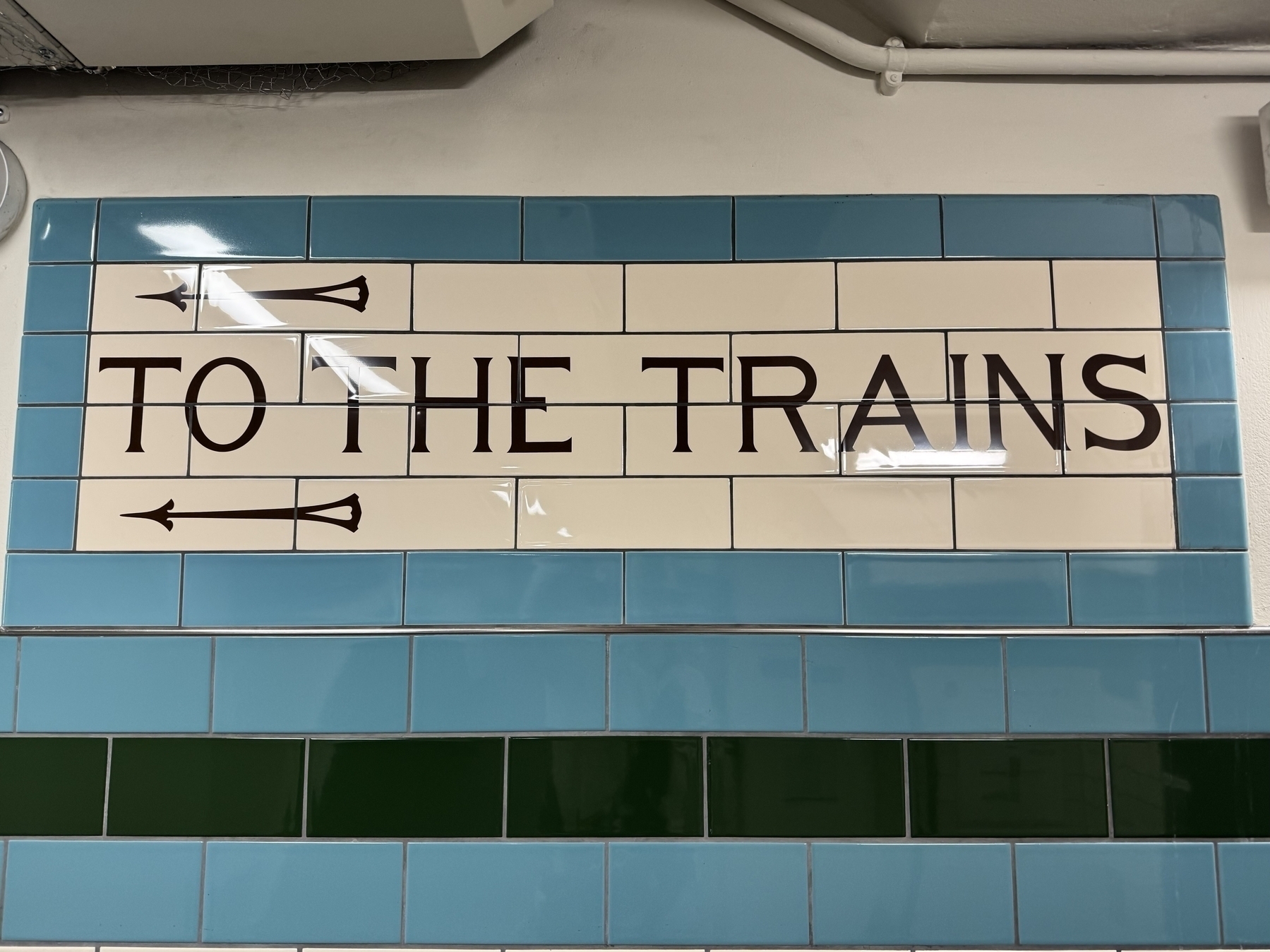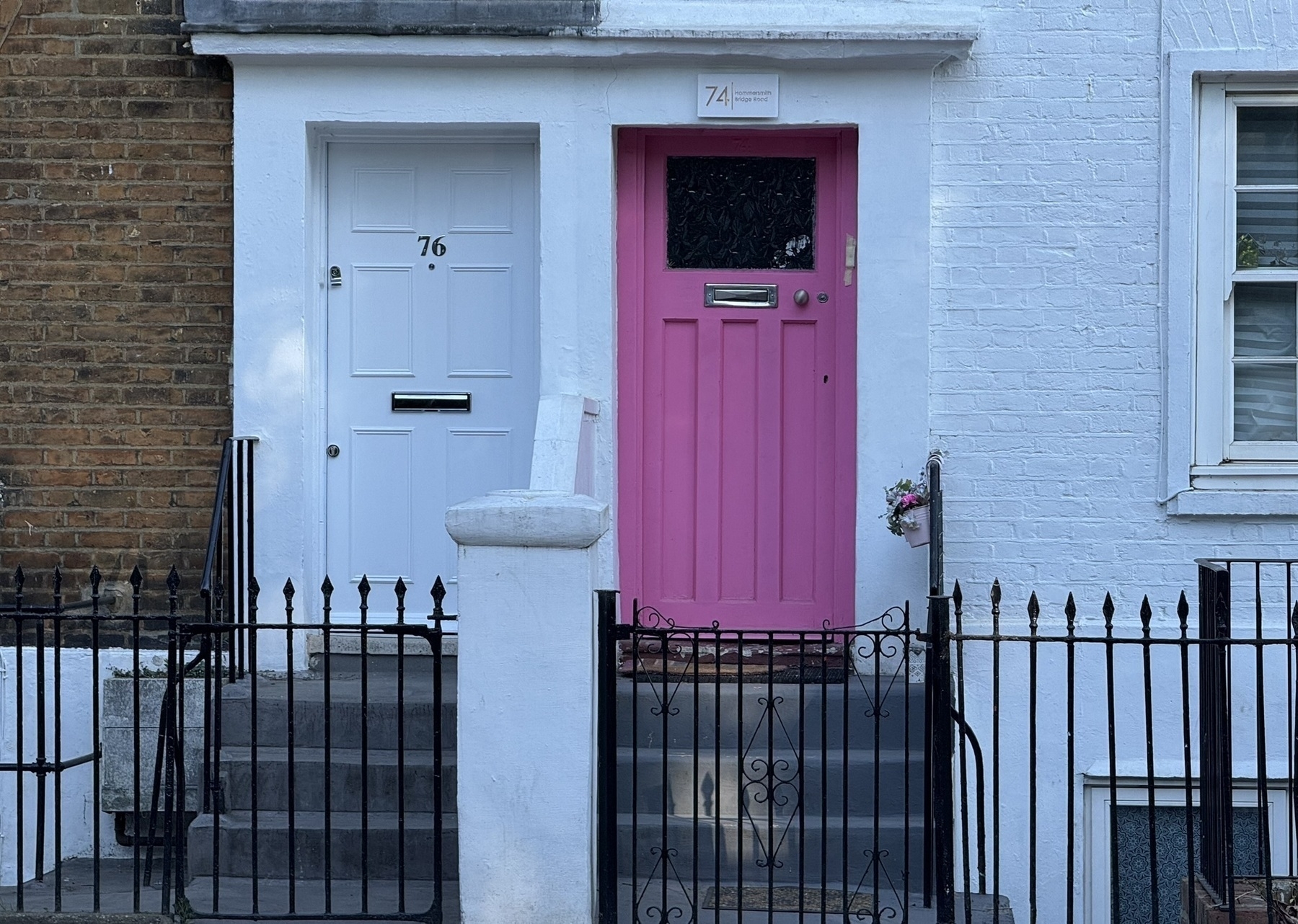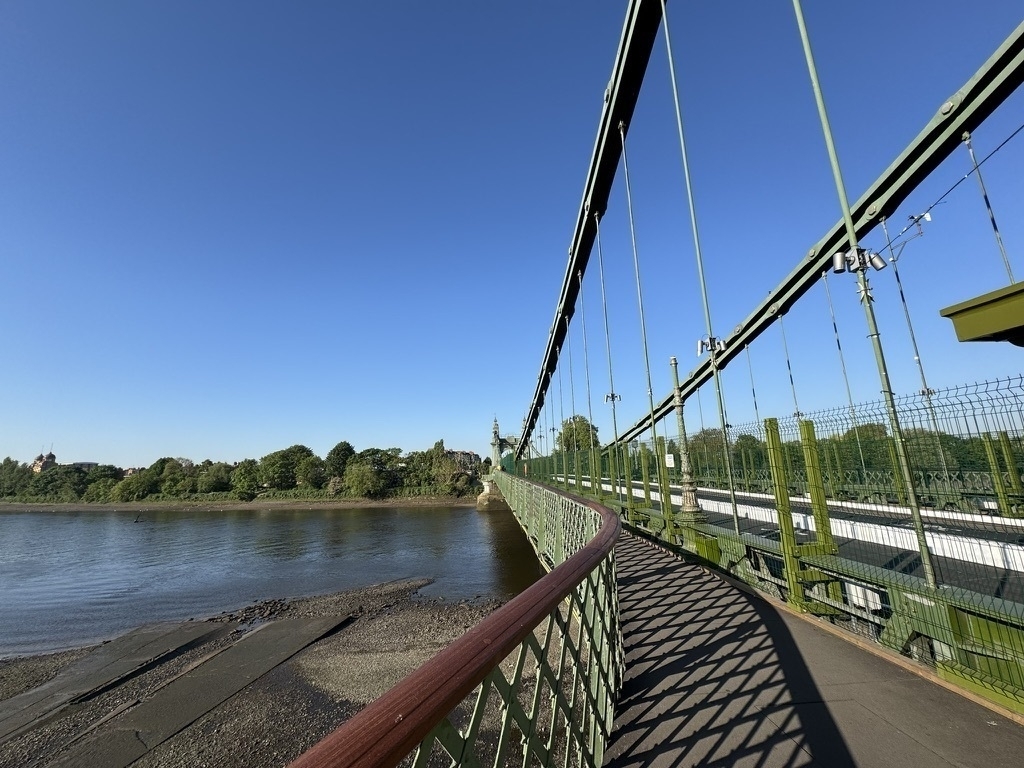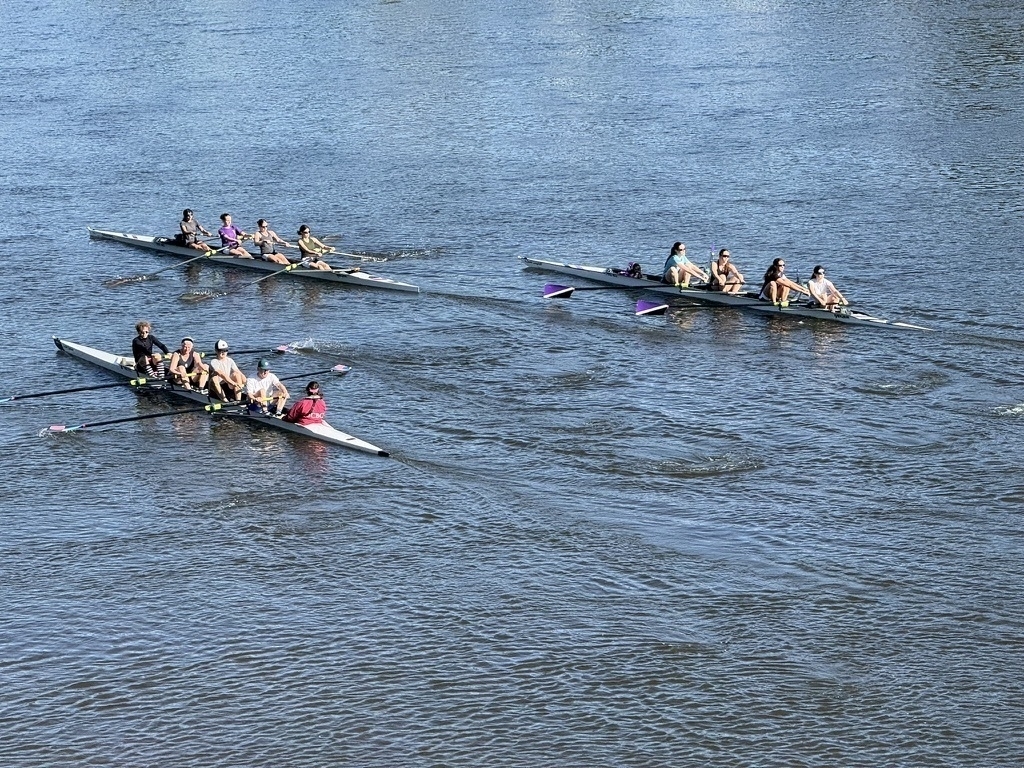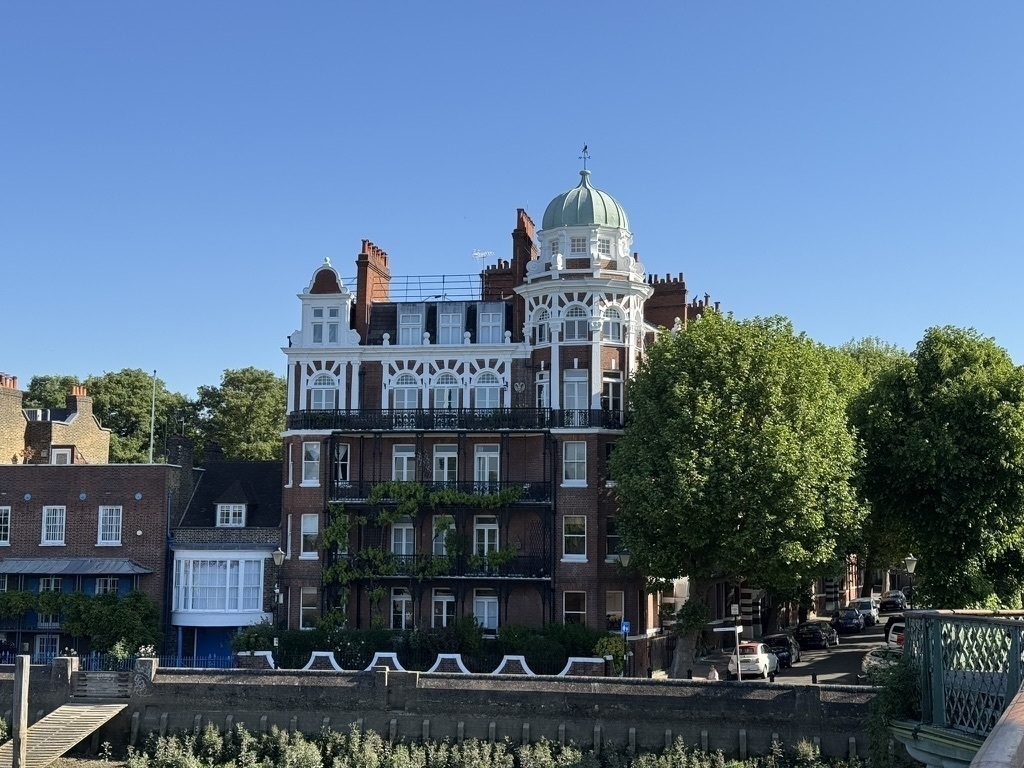My manager asked me to cover a two-day conference there and I said sure. I added a few vacation days to the trip and Julie came with me.
We went to London on our honeymoon 31 years ago, and again in the late 90s and 2002, so this is our fourth trip there, but our first in 23 years.
We visited a childhood friend of mine on Monday; she is now spending half her time in London and half in Florida, along with her new partner, whom we met for the first time and of whom we heartily approve. And we visited another friend of mine and former college on Saturday for brunch in a terrific French cafe called Boheme a few blocks from the Leicester Square tube station.
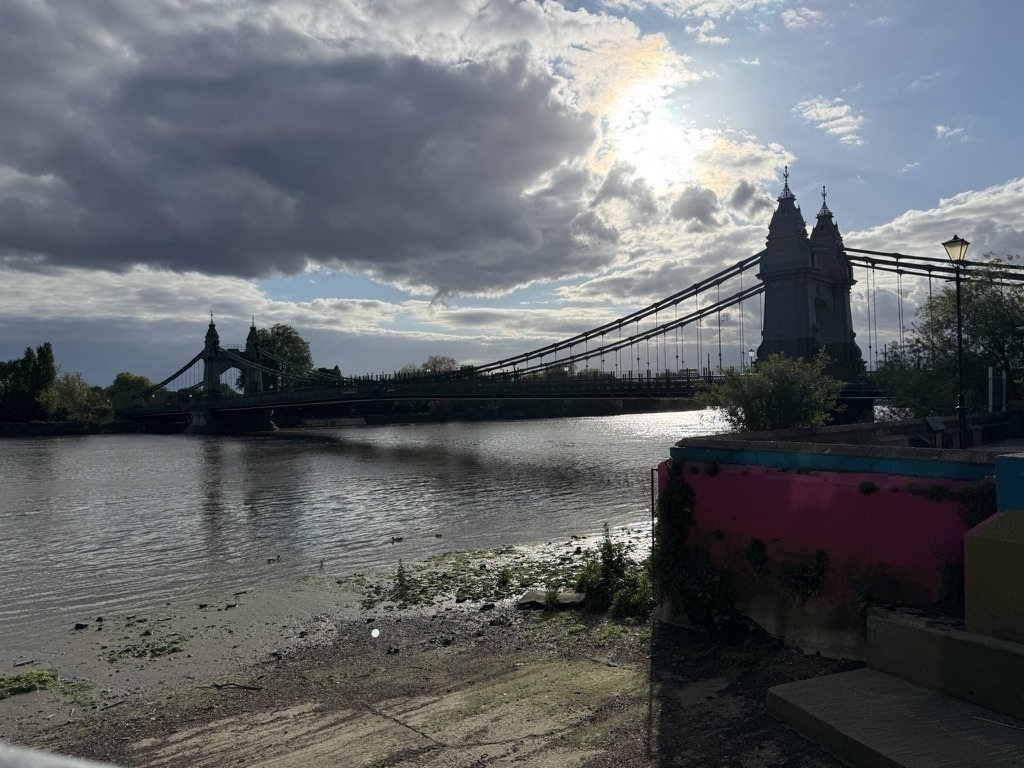



With my childhood friend, we visited the British Museum, to which we’d been on our previous visits and seen the big exhibits — the Elgin Marbles, big Egyptian monuments, and so forth. Almost at random, we started in the Mesopotamian room, where we spent about 90 minutes reviewing four cabinets of fascinating artifacts from a site called the Killing Pit, where an ancient queen had been buried along with many of her servants who — according to the plaque — went to their deaths willingly. I believe there should have been quote marks around the word “willingly.” We also visited the cafe. Visiting cafes is the best part of museums.
We went to the National Gallery — again, spending a lot of time in just a tiny part of the museum, and a lot of tie in the cafe too — the Victoria and Albert (we started at the cafe, then did the museum), and we took the Uber boat cruise on the Thames.
I went for a couple of long walks along the Thames in Hammersmith, including crossing the Hammersmith Bridge, a Victorian bridge that’s now closed to motor traffic.

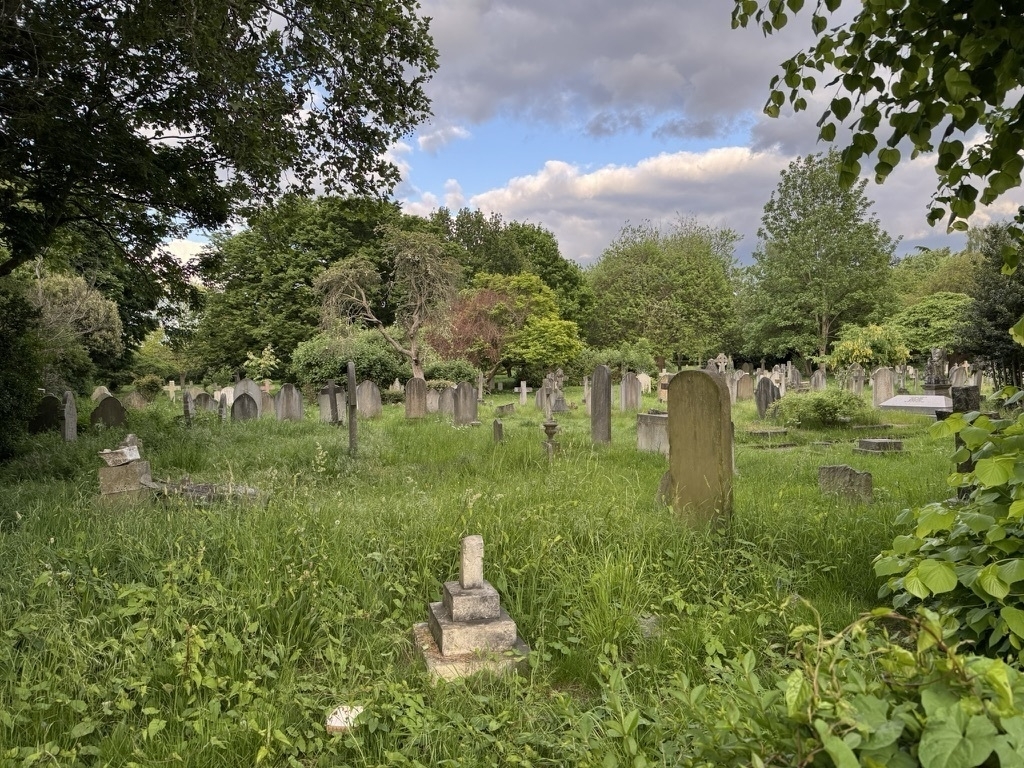
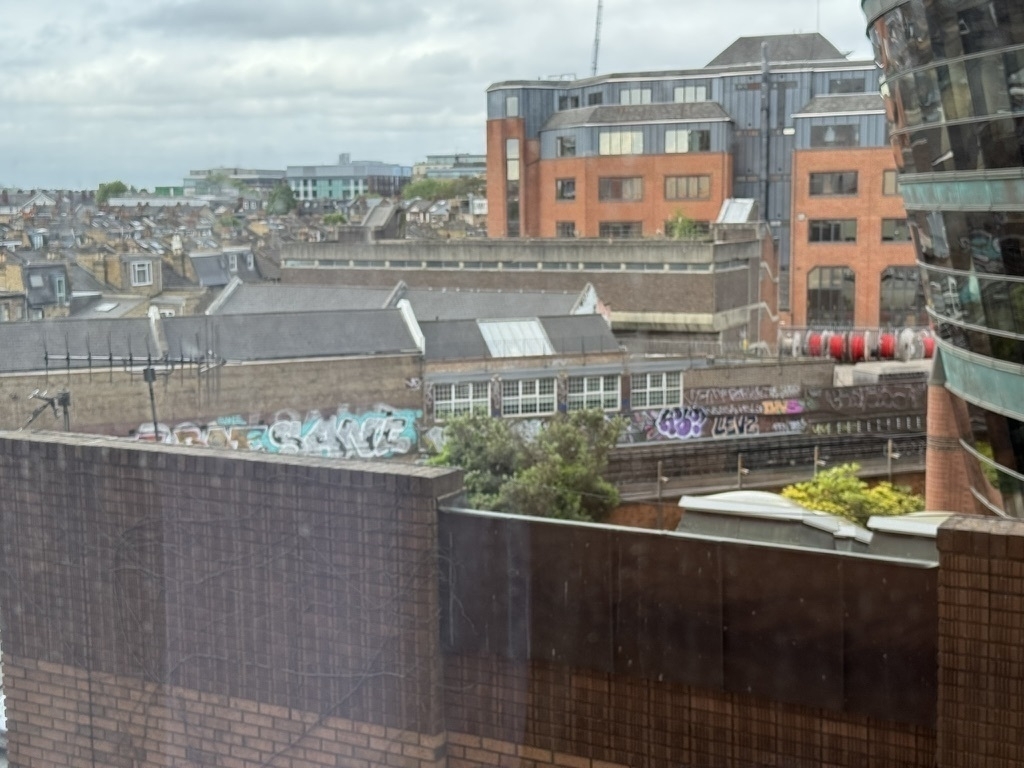
We stayed at a Premier Inn in Hammersmith, which was the most adequate hotel I’ve ever stayed at in nearly 40 years of travel. Its motto could be: “We’re fine, I guess.” It wasn’t exactly bad, but it wasn’t exactly good either. The same goes for the neighborhood of Hammersmith. The hotel is located on a major commercial road with buildings and a highway entry ramp situated so that if you’re walking to the nearest transit center, or to the shops, cafes and restaurants, you’re walking through a wind tunnel of icy air and fumes.
However, there was an excellent cafe, called Truth, to reward you at the end of the walk, as well as a fantastic pub, called Distillers. We ate at both multiple times. Our first visit to Distillers we were rewarded with the authentic British pub experience, thanks to our outstanding waiter, an aspiring actor from Ohio. Julie is from Ohio too, and they bonded on Buckeye things. And the transit center was easy to walk to and well-located to get you all around London.
London is mostly not so different from how it was on our previous visits, more than 20 years ago. It’s far more multicultural than it was; walking around we heard many accents and languages. Of course, we had outstanding Indian food; Indian food is now the national cuisine of England, we’re told.
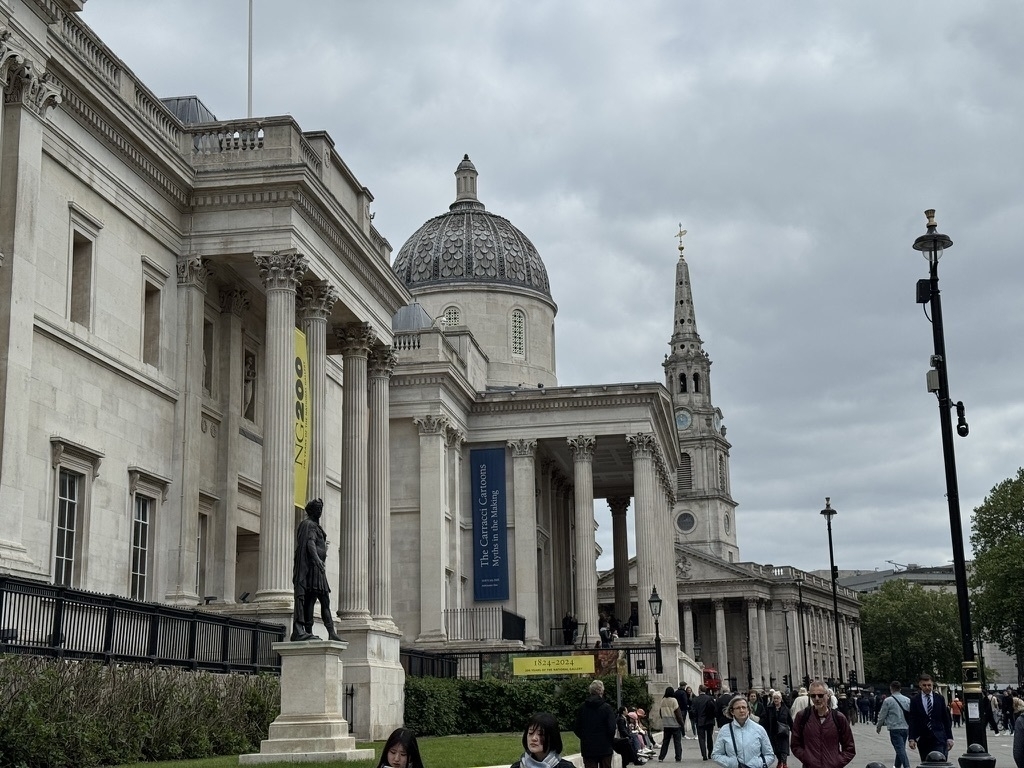
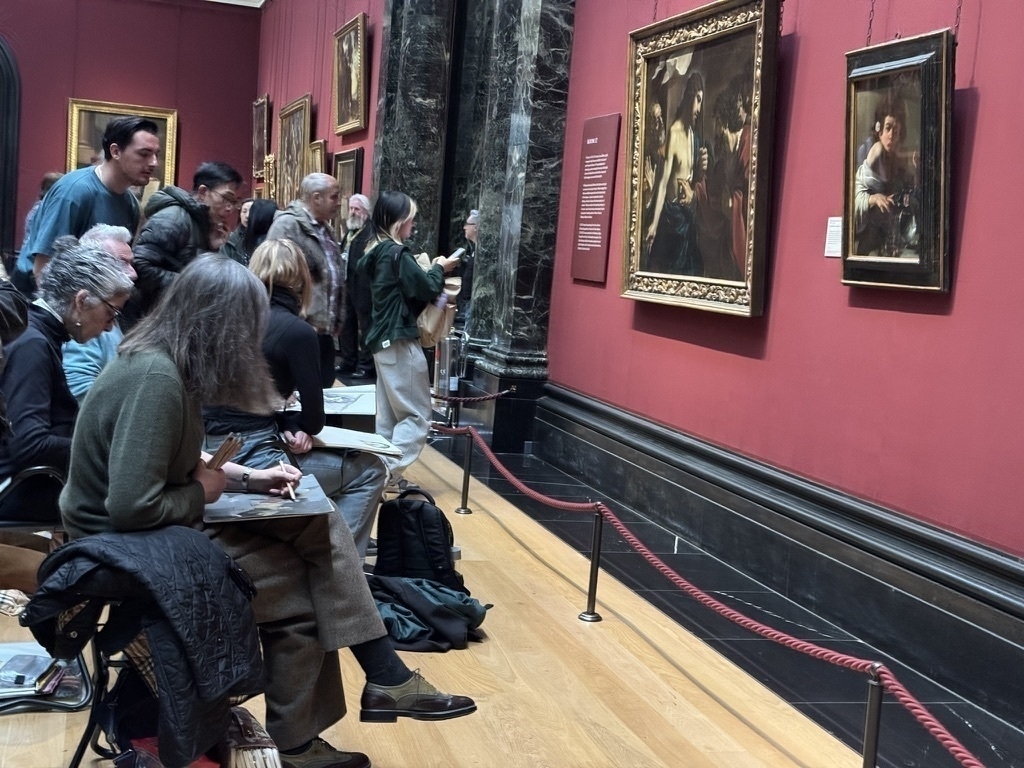

Indeed, nearly every meal we ate in London was delicious, even the catered food at the conference I attended. (Except for the meals at the Premier Inn, which were adequate.) Thirty-plus years ago, you were still hearing jokes about how bad British food was, everything boiled to flavorlessness, etc. Those jokes are now hopelessly-out-of-date.
The biggest difference between our last visit, more than 25 years ago, and this most recent visit is how digital the city is: On our first visit in 1994, we carried bills and coins and paper maps for directions, and when we wanted to call home to check phone messages, we fed pound coins into pay phones. In the late 90s, we still used cash and maps, but we also stopped in to Internet cafes every few days and we could use calling cards on pay phones. By the early 2000s, I had a PalmPilot and mobile phone; I switched out the SIM on the mobile and made calls using that. I remember calling my Dad from a pub to wish him happy birthday; that struck me as wildly futuristic.
This visit, everything was digital. My phone just worked as soon as I got off the plane, with no need to mess with SIM cards. (Friends who travel more frequently internationally than I do will use a second phone for travel. I may need to look into that, as I might have another international trip in June.) I never used cash at all; paid for everything with my iPhone or a tap-to-pay credit card. We rarely stopped to ask for directions; just used Google Maps to find our way around and find restaurants, or took Uber. Obviously more efficient, but less social — less excuse to talk with people.

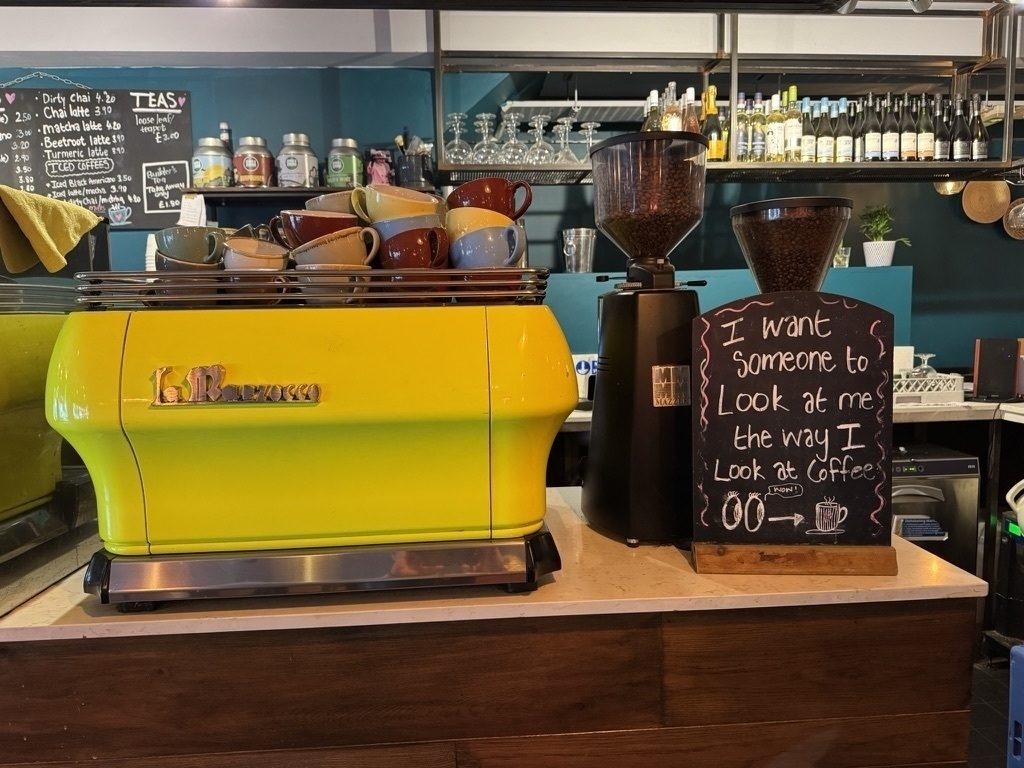
London was and is a relatively clean and well-run city. We saw a little trash on the streets, and homelessness, and some possible mental illness, but downtown San Diego is worse, and San Francisco was far worse when I was last in that city in 2019. The public transit system in London is a jewel — efficient, inexpensive, and easy to use and navigate. Reading the news in the U.S. — even the mainstream, left-leaning news, as I do — I get the idea that post-Brexit the U.K. is teetering on the edge of collapse — mass starvation, food riots, breakdown of society — “Human sacrifice! Dogs and cats living together! Mass hysteria” That does not seem to be the case.




